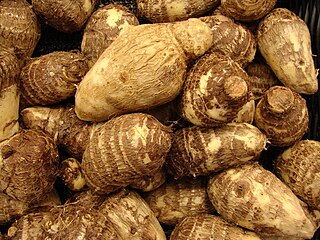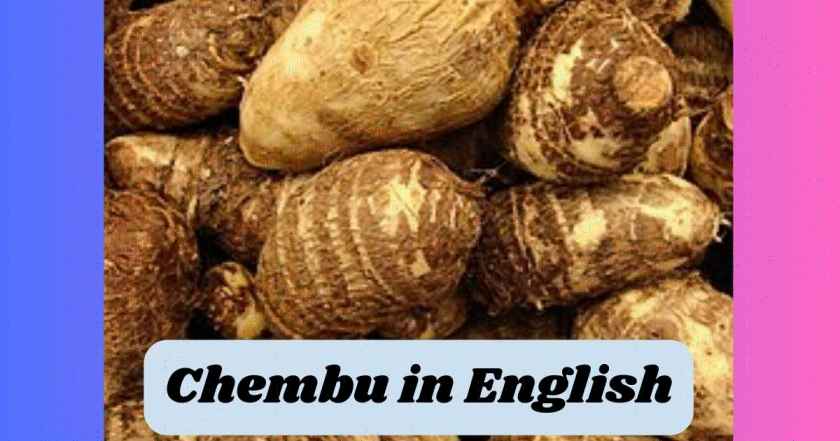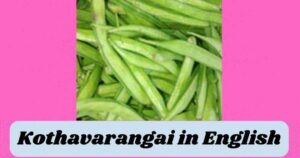Chembu in English
- English name of Chembu is “Colocasia / Taro Root“
Chembu in Kannada
- Kannada name of Chembu is known as “Alavi“

What is Chembu?
Chembu, also known as taro root or colocasia, is a versatile and nutritious vegetable that holds a special place in various cuisines around the world. Understanding the significance of Chembu goes beyond its culinary uses; it offers a glimpse into different cultures and traditions.
Originating from tropical regions, Chembu has been a staple food for centuries, valued for its unique flavor and health benefits. In many cultures, it is not just a vegetable but a symbol of prosperity and good fortune. In Kannada, “Chembu” is referred to as “Alavi”.
There are several types of Chembu, each with its own characteristics. For example, there’s Kochu Chembu, which is small, and Sheema Chembu, which are larger. There’s also Karutha Chembu, Kannan Chembu, Veluthachembu, Malayaryan Chembu, Vazhachembu, and Karichembu.
In Kerala, they often use the small Chembu in dishes like moru curry, avial, and sambar. The larger ones are usually eaten after being steam boiled.
When it comes to health benefits, Chembu is a powerhouse of nutrients. Packed with vitamins, minerals, and dietary fiber, it offers a range of health advantages, from promoting digestion to boosting immunity. Its unique composition makes it a valuable addition to a balanced diet.
In the culinary world, Chembu inspires creativity and innovation. From savory stews to crispy chips, there are countless ways to incorporate this root vegetable into delicious recipes. Its earthy flavor and smooth texture make it a favorite ingredient in both traditional and modern dishes.
Across different cultures, Chembu holds a special place in culinary traditions. Whether it’s used in Indian curries, Hawaiian poi, or African stews, its presence on the dining table signifies a connection to heritage and community. Embracing Chembu in cooking is not just about flavor; it’s about honoring the roots and stories behind each dish.
What is Madhura Chembu?
Madhura Chembu is also known as sweet colocasia. It’s called that because it tastes sweet. This vegetable grows from a stem. People usually cook it by steaming and eat it without any chutney because it’s already sweet. It’s good for you because it has lots of healthy nutrients like vitamin A, vitamin C, manganese, copper, pantothenic acid, and vitamin B6. Some people also call it ‘vazha chembu’ in different places.
Chembu’s English Name
When it comes to understanding the essence of “Chembu” beyond its native origins, delving into its English name provides valuable insights. The English term “taro root” is commonly associated with this versatile vegetable, offering a glimpse into its culinary significance.
The linguistic and cultural context surrounding the name “Chembu” sheds light on the rich history and traditions that accompany this root vegetable. While the English name may not fully capture the depth of its cultural importance, it serves as a bridge between different culinary traditions and global palates.
In various English-speaking regions, “taro root” is the prevailing term used to refer to Chembu. This name reflects the vegetable’s starchy nature and its role as a staple ingredient in diverse cuisines. Whether it’s called “taro root” in the West or “Chembu” in tropical regions, the vegetable’s versatility remains a constant across culinary landscapes.
Chembu Benefits
Chembu, also known as taro root, offers a plethora of benefits that cater to both culinary enthusiasts and health-conscious individuals. Its impressive nutritional profile makes it a rich source of macronutrients like carbohydrates, proteins, and fats, along with essential micronutrients such as vitamins and minerals. This nutrient density makes Chembu a valuable addition to any diet, providing a powerhouse of essential nutrients for overall well-being.
One of the standout benefits of Chembu is its high dietary fiber content, which not only aids in digestion but also promotes gut health. By incorporating this versatile vegetable into your meals, you can prevent constipation and improve gut function, enhancing your digestive health significantly.
Moreover, Chembu’s potential antioxidant properties, attributed to phytochemicals, play a vital role in reducing oxidative stress and inflammation in the body. This contributes to overall well-being and makes Chembu a great choice for those looking to boost their nutritional intake while enjoying delicious meals. Embracing Chembu in your diet is a win-win decision for a balanced and healthy lifestyle.
Chembu in Traditional Medicine: Chembu has a rich history in traditional medicine, dating back to its historical uses in folk remedies. This versatile vegetable has been a staple in traditional healing practices, with its medicinal properties being a subject of modern scientific research. Beyond its well-known nutritional benefits, Chembu is believed to offer potential health benefits that go beyond basic nutrition.
In traditional medicine, Chembu plays a significant role in promoting overall well-being and addressing various health concerns. Its inclusion in remedies and treatments highlights its importance in maintaining good health and vitality. Additionally, the folklore and cultural significance surrounding Chembu add a layer of depth to its medicinal use, reflecting the deep-rooted traditions and beliefs associated with this humble root vegetable.
Exploring the traditional medicinal aspects of Chembu not only sheds light on its therapeutic potential but also underscores the holistic approach to health and wellness embraced by different cultures. Embracing Chembu in both culinary and medicinal practices can offer a well-rounded approach to enhancing health and vitality.
Culinary Inspirations: Recipes Featuring Chembu
Traditional dishes from different cuisines offer a diverse array of ways to enjoy Chembu, also known as taro root. From comforting stews to crispy snacks, this versatile vegetable lends itself well to various culinary traditions. In Asian cuisine, Chembu is often featured in savory dishes like taro dumplings or crispy taro chips. On the other hand, Caribbean cuisine showcases Chembu in hearty stews and soups, adding a unique flavor and texture to the dishes.
For those looking to explore modern and innovative recipes, incorporating Chembu into salads, stir-fries, or even desserts can provide a fresh twist to traditional cooking. Its earthy flavor and starchy consistency make it a versatile ingredient that can be used in both sweet and savory dishes.
When cooking with Chembu, it’s essential to note that proper preparation is key to unlocking its full potential. Whether boiled, roasted, or fried, Chembu can be transformed into delectable dishes with the right techniques. Experimenting with different cooking methods and flavor pairings can elevate the humble taro root into a culinary delight that appeals to all tastes and preferences.







